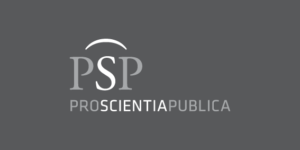On cognitive tensions. The mediating function of a symbol through the lens of Kleinian psychoanalysis and Peirce semiotic
DOI:
https://doi.org/10.15503/jecs2021.2.415.431Keywords:
Charles S. Peirce, Melanie Klein, symbolization, conscious, unconsciousAbstract
Aim. The foundation of symbolization is a substitution: a mediation between a Representamen and Object. The paper leverages this core mechanic to examine the substitutions within the conscious and unconscious parts of the mind, which compose every act of thinking. Recognizing it is a single instance: the Ego, which regulates this parallel mediation, the paper focuses on the exploration of dichotomies that result from the necessity to perform two symbolizations simultaneously.
Concepts. The study’s theoretical framework is determined by Charles S. Peirce’s (1998) concept of sign and Melanie Klein’s (1948) psychoanalytic theory. From semiotic and psychoanalytic angles, this paper explores possible comprehensions of the object in the quasi-mind (Interpretant in infinite semiosis) and actual realization of code in the act of individual thinking (Ego mediating between conscious and unconscious symbolization).
Results and conclusion. The main result of the study is the exposure of dichotomies that structure the shared ground for the conscious and the unconscious symbolization. This, in turn, highlights tangible constraints that the mind is subjected to in the act of thinking.
Cognitive value. The study’s main contribution is the high-level scheme of dynamics that hold the Ego in reality through the means of unconscious and conscious symbolization. The study also incorporates into coherent model unexamined aspects of individual sign usage: it deploys psychic continuity into the conscious symbolization process (by basing the model on the instance of Ego), which allows addressing the issues arising at the border of conscious and unconscious symbolization.
Downloads
References
Di Ceglie, G. R. (2005). Symbol formation and the construction of the Inner World. In: S. Budd, R. Rusbridger (Eds.), Introducing Psychoanalysis. Essential Themes and Topics (pp. 95-104). London: Routledge.
Chomsky, N. (2013). Notes on denotation and denoting. In: I. Caponigro, C. Cecchetto (Eds.), From Grammar to Meaning. The Spontaneous Logicality of Language (pp. 38-46). New York: Cambridge University Press.
Eco, U. (1976). A Theory of Semiotics. Bloomington: Indiana University Press.
Freud, S. (1960). General Introduction to Psychoanalysis. New York: Washington Square Press.
Freud, S. (1981). The unconscious. In: J. Strachey, A. Freud, A. Strachey, A. Tyson (Eds.), The Standard Edition of the Complete Psychological Works of Sigmund Freud. Vol. XIV (1914-1916): On the History of the Psycho-Analytic Movement, Papers on Metapsychology and Other Works (pp. 159-204). London: The Hogarth Press.
Isaacs S. (2002). The Nature and Function of Phantasy. In: J. Riviere (Ed.), Developments in Psychoanalysis (pp. 67-121). London: The Hogarth Press.
Jakobson, R. (1959). On linguistic aspects of translation. In: R. A. Brower (Ed.), On translation (pp. 232-239). Cambridge, Massachusetts: Harvard University Press.
Jung, C. G. (1975). The Structure of the Unconscious. In: G. Adler, M. Fordham, W. Mcguire (Eds.), The Collected Works of C. G. Jung. Volume 8: Structure and Dynamics of Psyche (pp. 186-213). Princeton: Princeton University Press.
Klein, M. (1948). Contributions to Psycho-Analysis. London: The Hogarth Press.
Peirce, Ch. S. (1984). Writings of Charles S. Peirce. Volume 2, 1876-1871. Bloomington: Indiana University Press.
Peirce, Ch. S. (1998). Essential Peirce. Bloomington: Indiana University Press.
Ransdell, J. (1977). Some Leading Ideas in Peirce’s Semiotic. Semiotica, 19, 157–178.
Segal, H. (1990). Notes on Symbol Formation. In: H. Segal (Ed.), The Work of Hanna Segal. A Kleinian Approach to Clinical Practice (pp. 49-69). Northvale: Jason Aronson Inc.
Segal, H. (1997). On Symbolism. In: H. Segal (Ed.), Psychoanalysis, Literature and War. Papers 1972–1995 (pp. 33-38). London: Routledge.
Segal, H. (1998). “The importance of symbol formation in development of ego” – in context. Journal of child psychotherapy, 3, 349-357.
Segal, H. (2002). Introduction to the Work of Melanie Klein. London: Karnac.
Steiner, R. (2007). Does the Peirce’s semiotic model based on index, icon, symbol have anything to do with psychoanalysis? In: G. Ambrosio, S. Argentieri, J. Canestri (Eds.), Language, Symbolization and Psychosis: Essays in Honour of Jacqueline Amati Mehler (pp. 219-272). London: Routledge.
Downloads
Published
Issue
Section
License
Copyright (c) 2021 Marta Iwaszuk

This work is licensed under a Creative Commons Attribution 4.0 International License.
CC-BY
Authors retain copyright and grant the journal right of first publication with the work simultaneously licensed under a Creative Commons Attribution License that allows others to share the work with an acknowledgement of the work's authorship and initial publication in this journal. All authors agree for publishing their email adresses, affiliations and short bio statements with their articles during the submission process.


